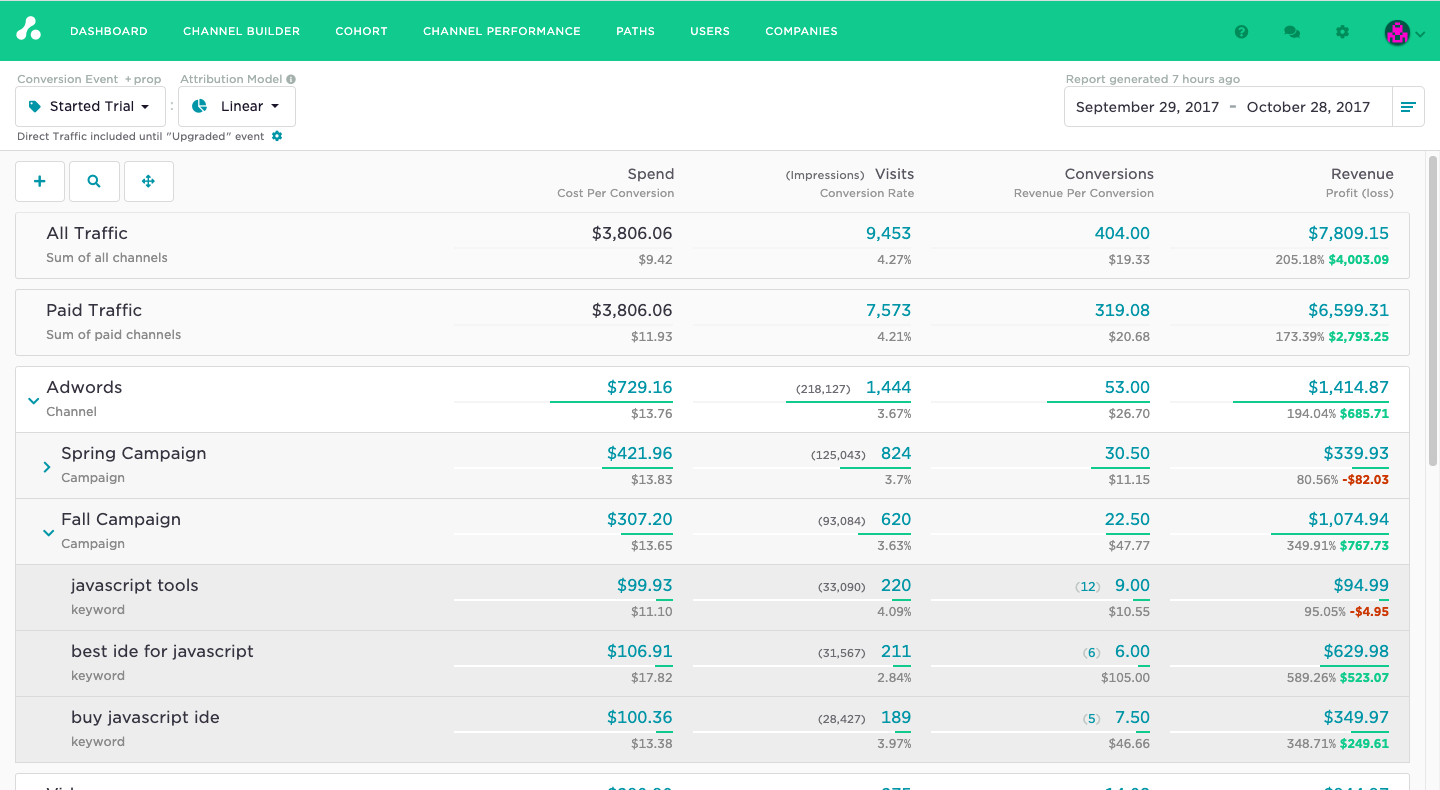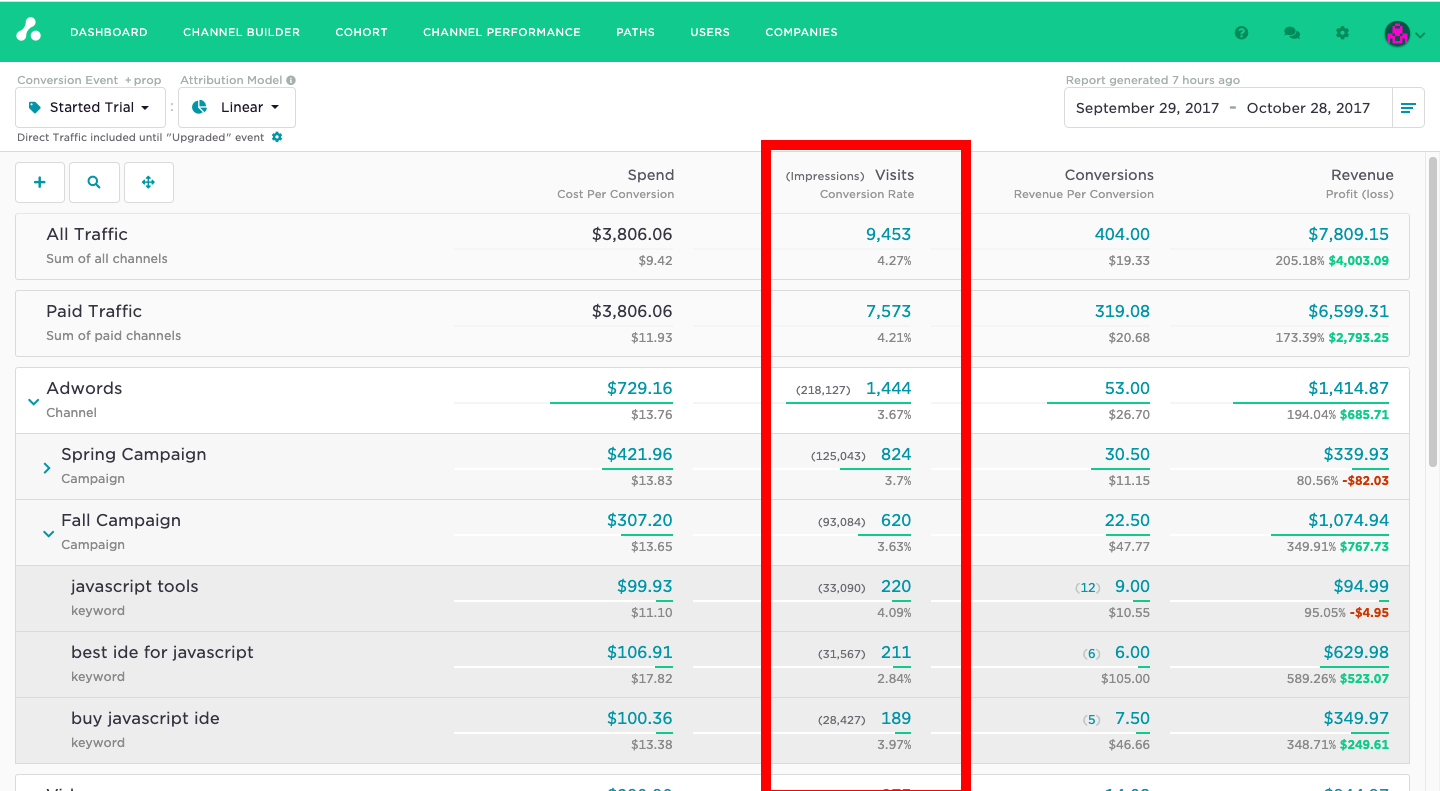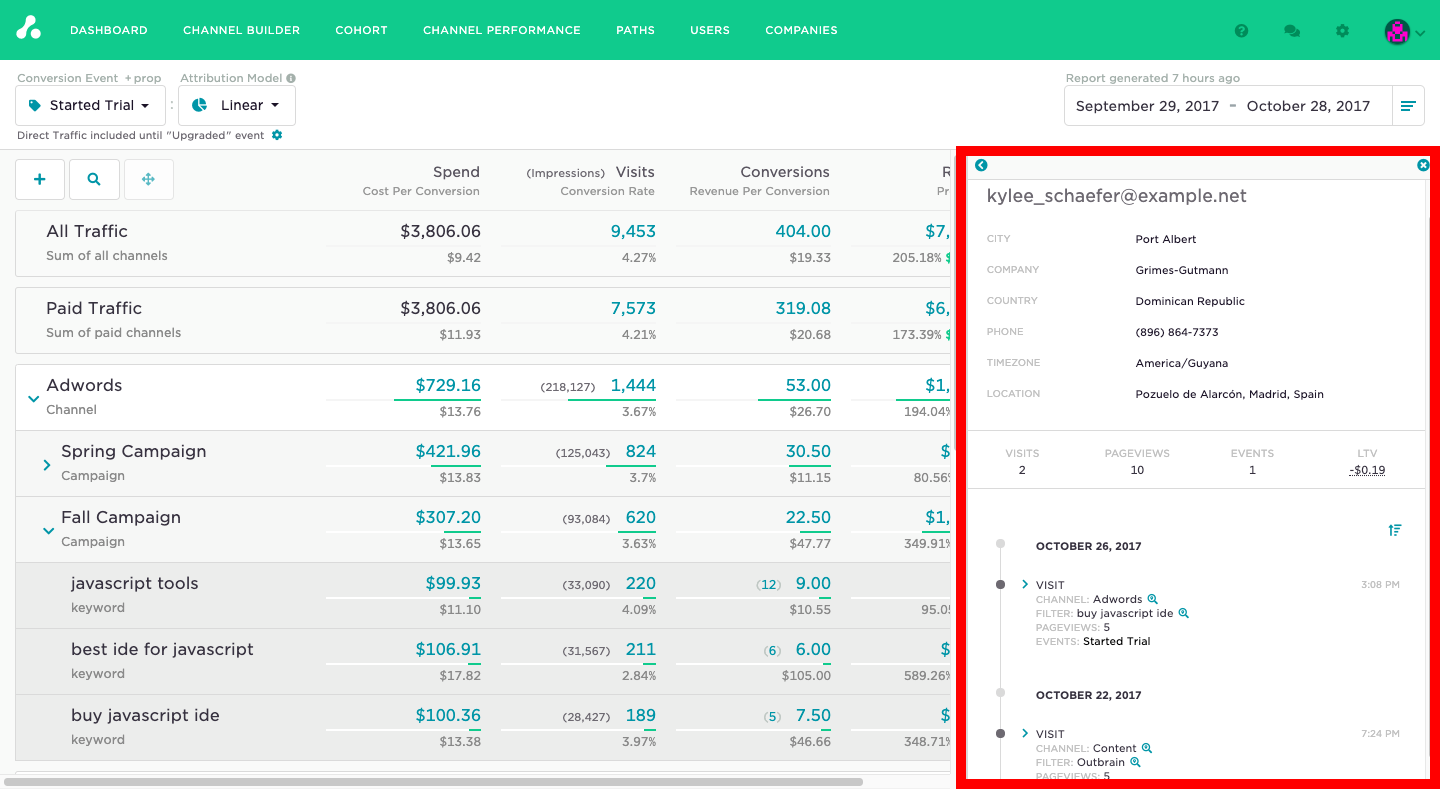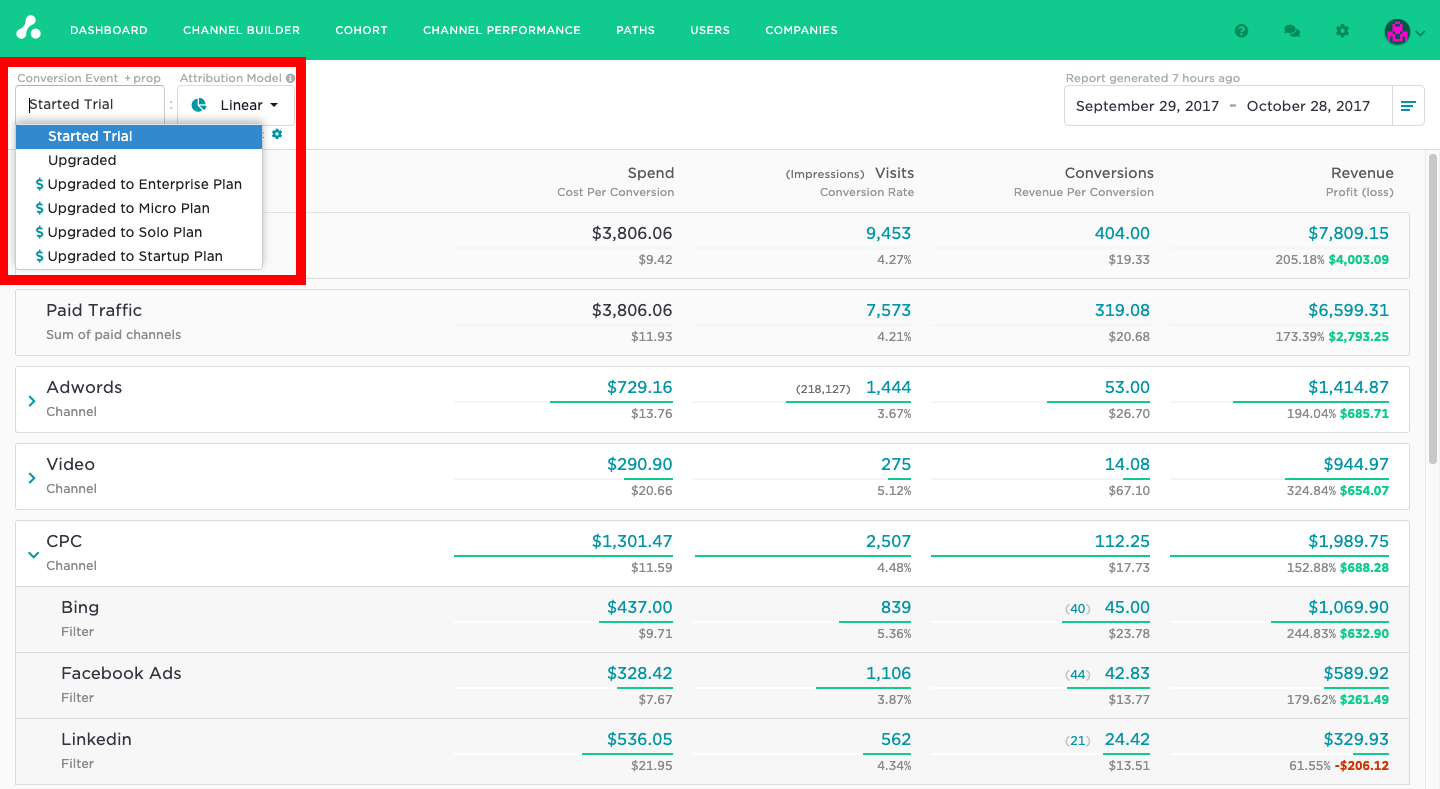Attribution Destination
Destination Info
- Accepts Page, Alias, Identify, and Track calls
- Refer to it as Attribution in the Integrations object
Components
- Server
Attribution is an easy to use one stop dashboard for multi-touch attribution across all marketing channels. Attribution prides itself on high-fidelity and allows marketers to trace every visit, conversion or revenue dollar to the source. Marketers can easily integrate Attribution and Segment to begin measuring the effectiveness of their campaigns today.
Getting Started
- From the Segment web app, click Catalog.
- Search for “Attribution” in the Catalog, select it, and choose which of your sources to connect the destination to.
- Enter the “Project ID” into your Segment Settings UI which you can find from your Attribution settings.
- It will take 15 - 30 minutes for data to begin populating on your Attribution dashboard.

Page
If you haven’t had a chance to review our spec, take a look tounderstand what the Page method does. An example call would look like:
analytics.page("pageLoaded");
Page calls are sent to Attribution to record visits on your dashboard.

Identify
If you’re not familiar with the Segment Specs, take a look to understand what the Identify method does. An example call would look like:
analytics.identify("userId123", {
email: "john.doe@segment.com"
});
Identify calls are sent to Attribution as an identify event and are used to assign traits like userid, name, and email to anonymous visitors.

Track
If you’re not familiar with the Segment Specs, take a look to understand what the Track method does. An example call would look like:
analytics.track("Clicked Login Button")
Track calls are sent to Attribution as a conversion event. You should add a conversion event anywhere a customer takes an action that you’d like to measure the return on ad spend & attribution for. Examples include sign up, demo scheduled, deal won, etc.

Alias
If you’re not familiar with the Segment Specs, take a look to understand what the Alias method does. An example call would look like:
analytics.alias('507f191e81');
The alias method can be used to merge two user identities in both Segment & Attribution, effectively connecting two sets of user data as one.
Engage
You can send computed traits and audiences generated using Engage to this destination as a user property. To learn more about Engage, schedule a demo.
For user-property destinations, an identify call is sent to the destination for each user being added and removed. The property name is the snake_cased version of the audience name, with a true/false value to indicate membership. For example, when a user first completes an order in the last 30 days, Engage sends an Identify call with the property order_completed_last_30days: true. When the user no longer satisfies this condition (for example, it’s been more than 30 days since their last order), Engage sets that value to false.
When you first create an audience, Engage sends an Identify call for every user in that audience. Later audience syncs only send updates for users whose membership has changed since the last sync.
Real-time to batch destination sync frequency
Real-time audience syncs to Attribution may take six or more hours for the initial sync to complete. Upon completion, a sync frequency of two to three hours is expected.
Settings
Segment lets you change these destination settings from the Segment app without having to touch any code.
| Setting | Description |
|---|---|
| Attribution Project Id (required) |
string. Your unique project ID from Attribution, which is accessible from your Attribution account. |
This page was last modified: 27 Oct 2023
Need support?
Questions? Problems? Need more info? Contact Segment Support for assistance!

 Web
Web Web
Web